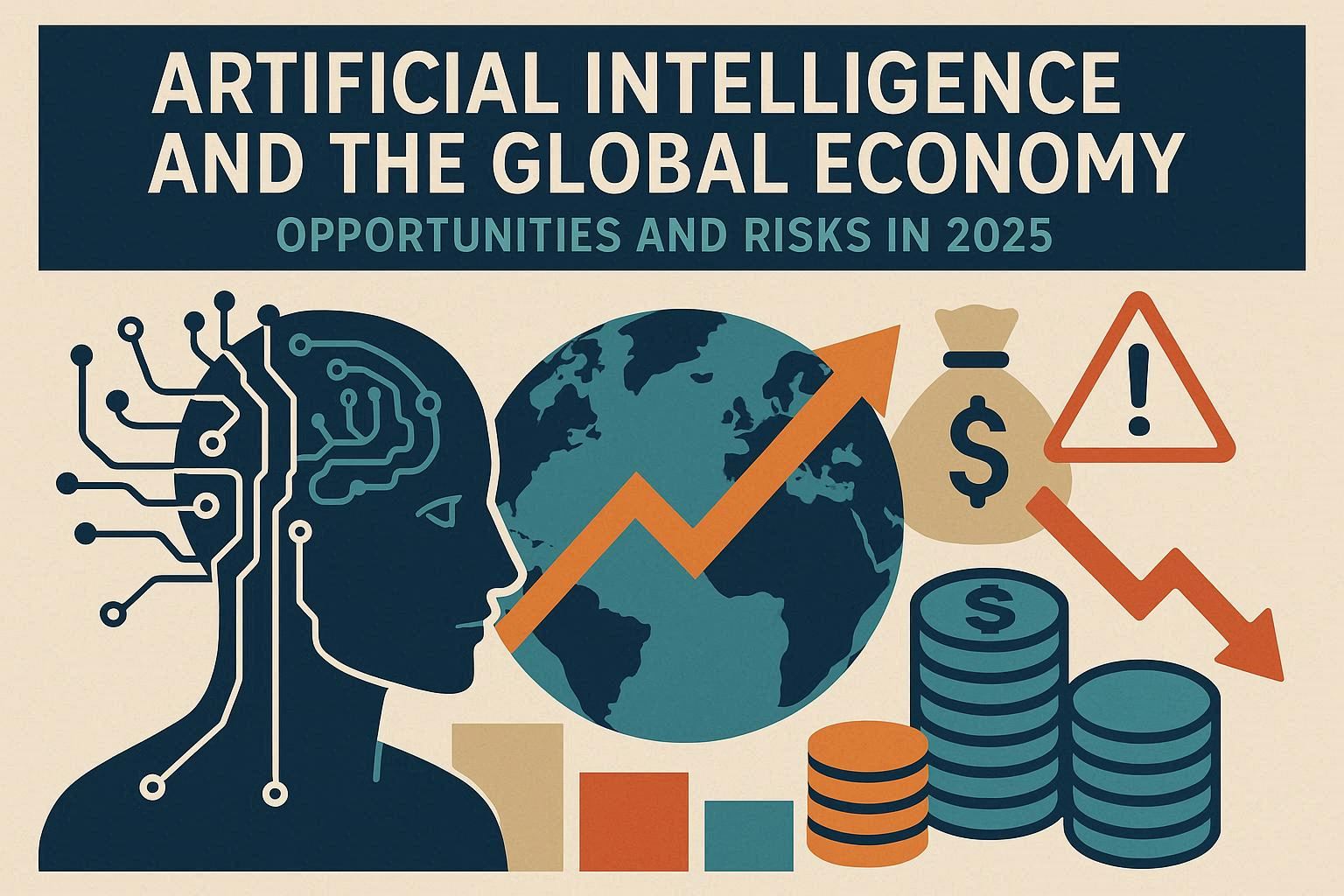Artificial Intelligence (AI) is no longer just a futuristic concept—it is a core driver of today’s global economy. From automated manufacturing to personalized finance, AI technologies are transforming how businesses operate, how workers perform their jobs, and how consumers interact with products and services. In 2025, AI stands as both a tremendous opportunity and a significant challenge for economies worldwide.
This article explores how AI is shaping global economic systems, its benefits, risks, and what the future holds.
1. The Rise of AI in the Global Economy
Over the last decade, AI has grown from simple automation tools into advanced systems capable of decision-making, learning, and prediction. Industries such as healthcare, banking, manufacturing, logistics, and education now integrate AI to improve efficiency and competitiveness. Global spending on AI technologies in 2025 is projected to exceed half a trillion dollars, reflecting its importance.
2. Economic Benefits of AI
- Productivity Growth – AI-driven automation reduces human error, speeds up processes, and increases output across industries.
- Cost Savings – Companies save money through predictive maintenance, efficient supply chains, and better resource management.
- Innovation – AI enables entirely new products and services, from self-driving cars to AI-powered medical diagnostics.
- Personalization – Businesses use AI to tailor products, advertisements, and experiences to consumer needs, boosting sales.
3. Impact on Employment
AI is reshaping labor markets in two ways:
- Job Displacement – Repetitive and routine jobs are increasingly automated, reducing demand for human workers in certain sectors.
- Job Creation – At the same time, AI generates demand for new roles such as data scientists, AI engineers, and digital ethicists.
The challenge for governments is ensuring workers are reskilled and educated to adapt to these changes.
4. AI in Key Economic Sectors
- Healthcare – AI assists in disease detection, patient care, and drug development.
- Finance – Algorithms analyze massive datasets for fraud detection, investment decisions, and customer support chatbots.
- Manufacturing – Robotics powered by AI improve efficiency and reduce production costs.
- Logistics – AI optimizes supply chains, delivery times, and warehouse management.
5. Risks and Challenges of AI in the Economy
- Inequality – Wealth may concentrate in countries and companies that dominate AI development.
- Bias in Algorithms – Poorly designed AI systems can reinforce discrimination and unfair practices.
- Data Privacy – Increased use of personal data raises security and ethical concerns.
- Unemployment – Without proper adaptation, millions of workers may lose their jobs.
6. Government and Policy Responses
Governments worldwide are crafting AI regulations to ensure safety, transparency, and ethical use. Policies include:
- Funding for AI research and development.
- Investment in worker reskilling programs.
- Rules for data protection and cybersecurity.
- Guidelines to ensure fair competition in AI-driven markets.
7. The Future of AI in the Global Economy
Looking ahead, AI will continue to expand into every sector of the economy. Experts predict:
- AI contributing trillions of dollars to global GDP growth.
- AI-driven sustainability solutions reducing energy use and carbon emissions.
- Greater collaboration between humans and machines, rather than full replacement of workers.
- Stronger international cooperation on ethical AI standards.
Conclusion
Artificial Intelligence is not just a technological trend—it is an economic revolution. While it brings unmatched opportunities for productivity, innovation, and growth, it also presents challenges of inequality, job displacement, and ethical concerns. The future of the global economy in 2025 and beyond will depend on how effectively societies balance the promise of AI with its risks.

